Yarns
 "She's got to go, Ted .."
"She's got to go, Ted .."-
This Gansey is another gem from Cromer Museum. It appears that the yarn used was a mix of fibres, as the inside is a completely different colour from the outside. Wool & linen/cotton? This mix was sometimes known as Drugget & like a good pair of indigo jeans, the dye wears away with friction, leaving the ...
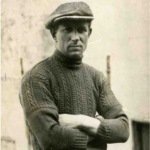
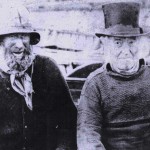 Possibly.
Most men washed overboard were considered to be buried at sea. It was hugely impractical to transport a corpse & no parish would want to stand the cost of burying a stranger. There are over 800 graves in the churchyard at Old St Stephen’s Church, in Robin Hoods Bay on the N. Yorkshire coast. Many ...
Possibly.
Most men washed overboard were considered to be buried at sea. It was hugely impractical to transport a corpse & no parish would want to stand the cost of burying a stranger. There are over 800 graves in the churchyard at Old St Stephen’s Church, in Robin Hoods Bay on the N. Yorkshire coast. Many ...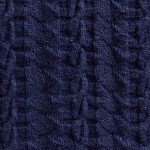 Patterns were handed down by eye & word of mouth. A youngster would learn off her older relatives, cutting her teeth on small & easy stuff like socks,
Patterns were handed down by eye & word of mouth. A youngster would learn off her older relatives, cutting her teeth on small & easy stuff like socks,
 Not every Gansey knitter was born to it; knitting was a universally activity and many a new bride was already a proficient practitioner before she married into a fishing family & had to learn how to knit the Ganseys required by her new family & community. One such knitter was told she’d never knit a ...
Not every Gansey knitter was born to it; knitting was a universally activity and many a new bride was already a proficient practitioner before she married into a fishing family & had to learn how to knit the Ganseys required by her new family & community. One such knitter was told she’d never knit a ...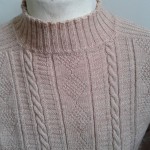 Know your tension. Buy a box of matches. Learn the stitch requirements of design elements & have a trial run, ie a tension square or a small project to find out what this means in your case. Hats & mittens are good. Find out about construction niceties such as gussets. You can ask about shoulder ...
Know your tension. Buy a box of matches. Learn the stitch requirements of design elements & have a trial run, ie a tension square or a small project to find out what this means in your case. Hats & mittens are good. Find out about construction niceties such as gussets. You can ask about shoulder ...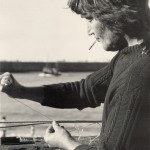 It wasn’t only women that knitted Ganseys.
I haven’t mentioned Alf Hildred. A trawlerman, he’d worked out of Great Grimsby & Hull before coming to live & work in Whitby nearly 50 years ago. He asked a neighbour, Patty Elder, if she’d knit him a Gansey.
It wasn’t only women that knitted Ganseys.
I haven’t mentioned Alf Hildred. A trawlerman, he’d worked out of Great Grimsby & Hull before coming to live & work in Whitby nearly 50 years ago. He asked a neighbour, Patty Elder, if she’d knit him a Gansey.
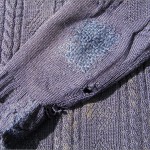 Nowadays Ganseys are frequently constructed on two needles & sized for comfort rather than as close-fitting working gear. Occasionally knitted in cotton, or by machine, these fashion garments serve as a reminder of days gone by & keep the patterns alive.
Things change.
Nowadays Ganseys are frequently constructed on two needles & sized for comfort rather than as close-fitting working gear. Occasionally knitted in cotton, or by machine, these fashion garments serve as a reminder of days gone by & keep the patterns alive.
Things change.
 "She's got to go, Ted .."
"She's got to go, Ted .."
 Possibly.
Most men washed overboard were considered to be buried at sea. It was hugely impractical to transport a corpse & no parish would want to stand the cost of burying a stranger. There are over 800 graves in the churchyard at Old St Stephen’s Church, in Robin Hoods Bay on the N. Yorkshire coast. Many ...
Possibly.
Most men washed overboard were considered to be buried at sea. It was hugely impractical to transport a corpse & no parish would want to stand the cost of burying a stranger. There are over 800 graves in the churchyard at Old St Stephen’s Church, in Robin Hoods Bay on the N. Yorkshire coast. Many ... Patterns were handed down by eye & word of mouth. A youngster would learn off her older relatives, cutting her teeth on small & easy stuff like socks,
Patterns were handed down by eye & word of mouth. A youngster would learn off her older relatives, cutting her teeth on small & easy stuff like socks,
 Not every Gansey knitter was born to it; knitting was a universally activity and many a new bride was already a proficient practitioner before she married into a fishing family & had to learn how to knit the Ganseys required by her new family & community. One such knitter was told she’d never knit a ...
Not every Gansey knitter was born to it; knitting was a universally activity and many a new bride was already a proficient practitioner before she married into a fishing family & had to learn how to knit the Ganseys required by her new family & community. One such knitter was told she’d never knit a ... Know your tension. Buy a box of matches. Learn the stitch requirements of design elements & have a trial run, ie a tension square or a small project to find out what this means in your case. Hats & mittens are good. Find out about construction niceties such as gussets. You can ask about shoulder ...
Know your tension. Buy a box of matches. Learn the stitch requirements of design elements & have a trial run, ie a tension square or a small project to find out what this means in your case. Hats & mittens are good. Find out about construction niceties such as gussets. You can ask about shoulder ... It wasn’t only women that knitted Ganseys.
I haven’t mentioned Alf Hildred. A trawlerman, he’d worked out of Great Grimsby & Hull before coming to live & work in Whitby nearly 50 years ago. He asked a neighbour, Patty Elder, if she’d knit him a Gansey.
It wasn’t only women that knitted Ganseys.
I haven’t mentioned Alf Hildred. A trawlerman, he’d worked out of Great Grimsby & Hull before coming to live & work in Whitby nearly 50 years ago. He asked a neighbour, Patty Elder, if she’d knit him a Gansey.
 Nowadays Ganseys are frequently constructed on two needles & sized for comfort rather than as close-fitting working gear. Occasionally knitted in cotton, or by machine, these fashion garments serve as a reminder of days gone by & keep the patterns alive.
Things change.
Nowadays Ganseys are frequently constructed on two needles & sized for comfort rather than as close-fitting working gear. Occasionally knitted in cotton, or by machine, these fashion garments serve as a reminder of days gone by & keep the patterns alive.
Things change.


